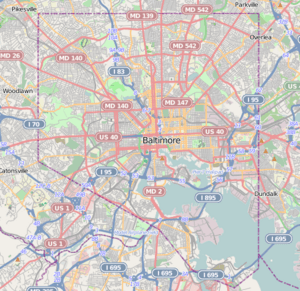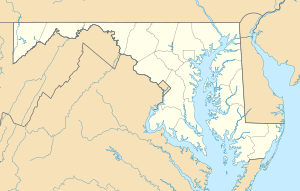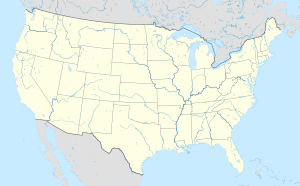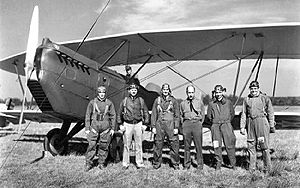Logan Field (Maryland) facts for kids
Quick facts for kids
Logan Field
|
|||||||||||||||||||
|---|---|---|---|---|---|---|---|---|---|---|---|---|---|---|---|---|---|---|---|
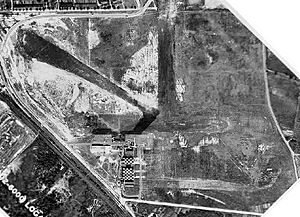
A September 1938 aerial view of Logan Field (courtesy of the National Archives, photo # 18-LMU-V1-850G).
|
|||||||||||||||||||
| Summary | |||||||||||||||||||
| Serves | Baltimore, Maryland | ||||||||||||||||||
| Built | 1920 | ||||||||||||||||||
| In use | 1920–1945 | ||||||||||||||||||
| Coordinates | 39°14′57″N 076°31′10″W / 39.24917°N 76.51944°W | ||||||||||||||||||
| Map | |||||||||||||||||||
| Runway | |||||||||||||||||||
|
|||||||||||||||||||
Logan Field, also called the Dundalk Flying Field, was an old airport in Dundalk, Maryland. It was located near Baltimore, not far from where the Francis Scott Key Bridge is today. This airport was open from 1920 to 1945.
Contents
Why Was Logan Field Renamed?
Logan Field was first called the Dundalk Flying Field. But it was renamed very quickly. On July 5, 1920, a pilot named Army Lt. Patrick H. Logan was badly hurt when his plane crashed. His aircraft was a French Nieuport 28 from World War I, nicknamed the "Red Devil." The crash happened at the airport's first air show.
Because of this sad event, the airfield was renamed in Logan's honor. This happened during the closing ceremonies of that same air show.
What Did Logan Field Look Like?
Logan Field had three landing strips. These strips were made of turf and cinder. One runway was 3,000 feet long. The other two runways were 2,000 feet long each.
The airport also had several small buildings. These were made of clapboard and were used for passengers and mail. There were also simple hangar buildings. These included military facilities for the Maryland National Guard's 104th Observation Squadron.
The History of Logan Field
Early Days and Growth
Logan Field opened in 1920. It was a 100-acre piece of land in southeast Baltimore County. The airport was on the Patapsco Neck peninsula. This land stuck out into the Chesapeake Bay. It was between the Patapsco River to the south and Back River to the north.
The airport was close to small towns like Dundalk, Essex, and Middle River. These towns grew a lot after World War II. Closer to Baltimore were neighborhoods like Highlandtown and Canton. These areas were very near the new airport and future harbor facilities.
Starting in 1921, Logan Field became the home base for the Maryland National Guard's new air unit. This unit was called the 104th Observation Squadron. This was right after the first experiences of combat flying in World War I (1917–1918).
In 1929, the airport added lights for night flights. By the 1930s, Logan Field had regular commercial flights. You could fly from Baltimore to places like Washington, New York, Atlantic City, and Miami. The airport also held regular air shows. Famous pilots like Charles Lindbergh, Amelia Earhart, and Douglas "Wrong Way" Corrigan visited Logan Field.
Logan Field During World War II
During World War II, the military took control of Logan Field. They also controlled the new Baltimore Municipal Airport, which was built next to Logan Field. In 1943, Logan Field stopped being used for planes. Instead, it was turned into a prisoner-of-war camp. This camp held soldiers from the Axis powers, mostly Germans and some Italians.
Logan Field was one of many camps that held German prisoners of war. These prisoners often worked on farms in the area.
Why Did Logan Field Close?
Logan Field did not reopen after World War II. Instead, all civilian flights moved to the newer Baltimore Municipal Airport. This airport had been built next to Logan Field starting in 1929. It had a modern Art Deco-style passenger terminal from the 1930s.
This new terminal served customers of Pan-American Airways' "Flying Clipper" service. This service used new Boeing Company "flying boats." These planes offered flights across the Atlantic and Pacific Oceans, though they made several stops.
Within a few years after the war ended, the land where Logan Field once stood was changed. It became the residential neighborhood called Logan Village. Today, there is almost no sign that Logan Field ever existed. There is only a historical marker at the Logan Village shopping center.


